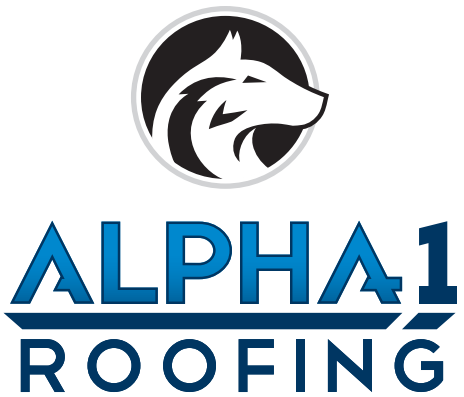As a homeowner, one of the most significant investments you’ll make in your home is your roof. Over time, wear and tear, weather, and age can take a toll on your roof, making it essential to assess its condition regularly. One of the most critical questions you might face is whether your old roof should be removed entirely. In this article, we will explore when a complete tear-off is necessary and how it can benefit your home in the long run.
What is a Complete tear-off?
A complete tear-off refers to the process of removing the entire existing roofing system, including shingles, underlayment, and any other roofing materials, down to the roof deck. This is often done when the roof has reached the end of its lifespan or if significant damage has occurred. Unlike a simple overlay, which involves adding a new layer of shingles on top of the old, a complete tear-off ensures that your new roof is installed on a clean, solid base.
Why Would You Need a Complete Tearoff?
There are several reasons why homeowners may need a complete tear-off. Some of these reasons are visible, while others may require a professional inspection. Below are some of the most common scenarios where a complete tear-off may be necessary:
1. Significant Roof Damage
If your roof has suffered significant damage due to a storm, heavy winds, or other external factors, a complete tear-off may be the best option. In cases where the shingles are missing, cracked, or curled, it might be difficult to determine the extent of the damage underneath. By opting for a complete tear-off, you ensure that all damaged materials are removed, and your new roof will be installed on a solid foundation.
2. Multiple Layers of Shingles
In some cases, homeowners may have had more than one layer of shingles installed over the years. While adding a second layer of shingles is a cost-effective option for roof repairs, it can lead to several problems. The added weight can strain the roof structure, and it can be difficult to detect underlying issues like rot, mold, or water damage. A complete tear-off is often the only way to address these problems effectively.
3. Old, Worn-out Roof Materials
Even if your roof has only one layer of shingles, if it’s aging and worn out, it may be time for a complete tear-off. Older roofing materials are more likely to have issues such as missing granules, discoloration, or excessive wear. These issues often signal that your roof is near the end of its lifespan, and rather than patching it up with a new layer of shingles, a complete tear-off allows for a fresh start with newer, more durable materials.
4. Improper Installation or Poor Construction
In some cases, previous roofing contractors may have installed your roof incorrectly or used substandard materials. If the roof is showing signs of poor craftsmanship, such as uneven surfaces, leaks, or gaps, a complete tear-off will allow for a proper inspection and the installation of high-quality materials that meet industry standards. This will ensure that your roof is both functional and secure.
5. Water Damage and Mold
If your roof has been leaking for some time, there’s a high likelihood of water damage to the underlying structure. Water can seep into the deck and rafters, leading to wood rot, mold, or mildew. In cases like this, a complete tear-off is the best option because it allows the roofing contractor to fully inspect and address any underlying water damage. Failing to remove damaged materials can lead to further issues down the line.
6. Improved Energy Efficiency
When a complete tear-off is done, it offers an opportunity to install upgraded insulation or ventilation systems that can improve the overall energy efficiency of your home. New roofing materials often come with better insulation properties, which can help reduce energy costs by keeping your home cooler in the summer and warmer in the winter. Additionally, proper ventilation ensures that heat and moisture don’t build up in your attic, further extending the life of your new roof.
7. Home Resale Value
If you plan to sell your home in the future, investing in a complete tearoff can significantly improve its resale value. A new roof, installed properly, will not only enhance the curb appeal of your home but also reassure potential buyers that they won’t have to worry about roof repairs for many years. In many cases, a home with a newly installed roof can command a higher selling price compared to one with an older, deteriorating roof.
What Happens During a Complete Tear-off?
A complete tear-off involves several steps, each of which is designed to ensure the roof is properly removed and the new roofing system is installed correctly. Here’s an overview of the typical process:
- Inspection and Preparation: Before the complete tear-off begins, the roofing contractor will perform a thorough inspection of your roof. This includes assessing the condition of the shingles, decking, insulation, and any other materials. If necessary, the area around your home will be protected to prevent debris from damaging your landscaping or property.
- Removing the Old Roofing Materials: The existing shingles, underlayment, and nails are removed by roofing professionals using specialized equipment. This step can take several hours, depending on the size of the roof and the complexity of the structure.
- Inspecting the Roof Deck: After the old materials are removed, the roof deck will be inspected for any damage. If there is any rot, mold, or structural damage, it will be repaired before new materials are installed. This is a critical step in ensuring that your new roof is built on a solid foundation.
- Installing New Roofing Materials: Once the deck is inspected and repaired (if necessary), the new roof will be installed. This typically involves placing a layer of underlayment, followed by new shingles, flashing, and other components. The roofing contractor will ensure that the roof is properly sealed and that all components are installed according to manufacturer instructions.
- Cleanup and Final Inspection: After the new roof is installed, the area will be thoroughly cleaned, and a final inspection will be conducted to ensure everything has been done correctly.
When a Complete Tear-off is Not Necessary
While a complete tear-off is the best option in many cases, it’s not always necessary. In some situations, a simple overlay may be sufficient. For example, if your roof is still in good condition and there are no underlying issues like rot or water damage, installing a new layer of shingles over the old one may be a more cost-effective solution. However, this should only be done after consulting with a professional roofer.
A complete tearoff is an essential step in ensuring that your home is protected from the elements. Whether your roof has suffered significant damage, has multiple layers, or is simply worn out, a complete tearoff can address underlying issues and provide a solid foundation for a new, long-lasting roof. While this process requires time, effort, and investment, it offers numerous benefits, including enhanced curb appeal, improved energy efficiency, and peace of mind, knowing that your home is safe and secure.
If you’re unsure whether a complete tear-off is necessary for your roof, reach out to an experienced roofing contractor. They will conduct a thorough inspection and help you determine the best course of action for your home. Contact us today!


